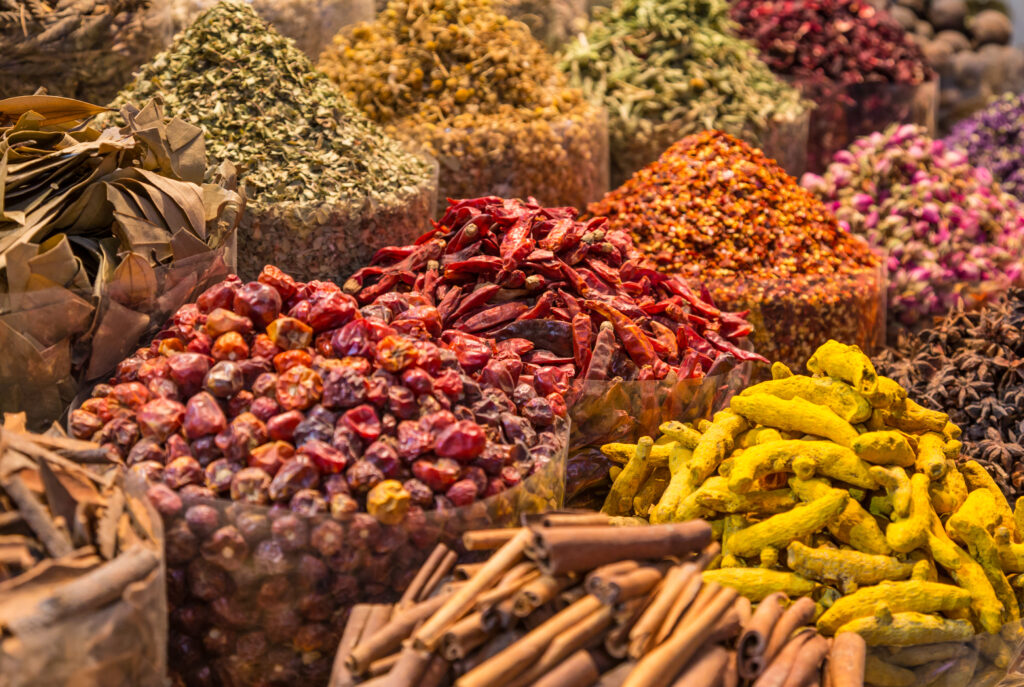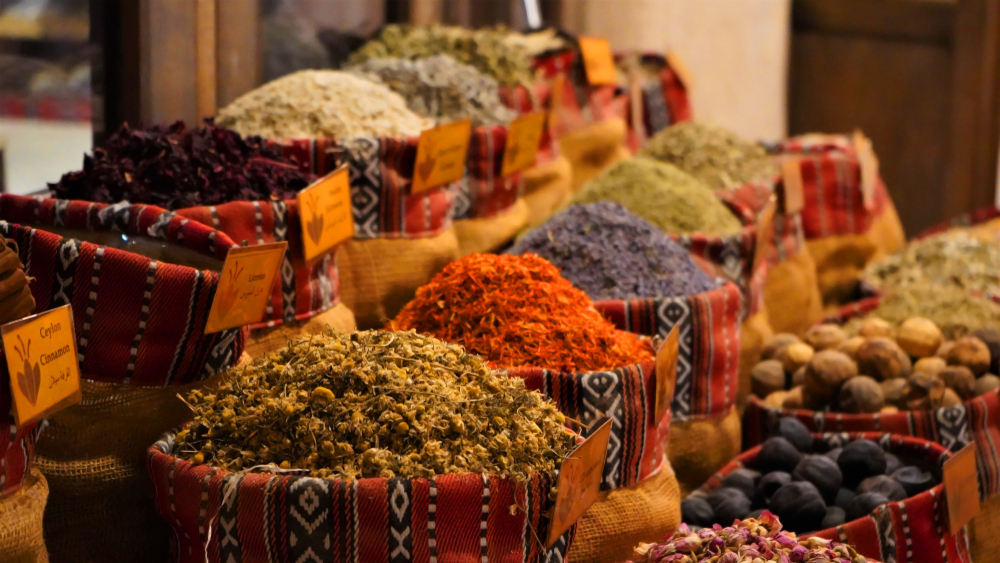Discover the Spiciest African Dishes: Which Ones to Try?
From the fiery flavors of West African soups to the intense heat of North African pastes, explore the spiciest African dishes and how they’ve shaped the continent’s culinary landscape. African cuisine is a vibrant tapestry of cultures, each bringing its own unique approach to spice and heat. This culinary diversity offers a thrilling adventure for spice lovers and food enthusiasts alike.
The Allure of Spice in African Cuisine
Spices are the soul of African cuisine. They’re not just added for heat, but also for flavor, medicinal value, and cultural significance. From communal gatherings to religious ceremonies, spices play an integral role in African culinary traditions. In many communities, the preparation of spicy dishes is a cherished ritual, often accompanied by stories, songs, and a deep sense of shared heritage.
History of Spices in Africa
Long before the spice trade became a global phenomenon, African communities were cultivating, trading, and innovating with spices. From the saffron of Morocco to the bird’s eye chili pepper of southeastern Africa, the continent has a rich tapestry of spicy ingredients that have shaped its food culture for millennia. Historical records suggest that certain spices were used as currency and were highly prized in ancient African kingdoms for their rarity and flavor.
Why Spice Matters
Beyond the tantalizing flavors, spices in African dishes often carry deep cultural meanings. They can signify wealth, health, and prosperity. For instance, in some cultures, presenting a spicy dish is a sign of respect and hospitality. Additionally, many African spices possess medicinal properties, aiding digestion, combatting infections, and providing essential nutrients. Herbs and spices like ginger, turmeric, and African basil are not only culinary delights but also key components in traditional African medicine, used for centuries to heal and nourish.

Unveiling the Spiciest African Dishes
While Africa is vast and diverse, there’s a unifying love for spicy foods across its regions. From aromatic pastes to fiery stews, every region boasts of dishes that tantalize the palate with heat. Let’s traverse the continent to discover dishes that stand out for their fiery kick.
West African Pepper Soup
A staple in many West African countries like Nigeria, Ghana, and Sierra Leone, pepper soup is much more than just a spicy broth. Made with a unique blend of indigenous spices such as uziza, uda, and calabash nutmeg, the soup gets its intense heat primarily from the Scotch Bonnet peppers. Depending on the region, the meat in the soup varies; it could be fish, goat, or even offal. Apart from its culinary appeal, pepper soup is deeply rooted in tradition. It’s often recommended as a remedy for common ailments and is a must-have at important communal events and ceremonies.
Doro Wat from Ethiopia
Doro Wat is not just an Ethiopian dish; it’s a culinary experience. It’s a slow-cooked chicken stew that simmers in a richly spiced sauce for hours, allowing the flavors to meld. The star of this stew is the berbere spice mix, a combination of chili peppers, garlic, ginger, fenugreek, and several other spices. The awaze paste adds an extra layer of heat and complexity. When served with injera, the spongy, tangy flatbread helps balance the stew’s heat, offering a harmonious blend of flavors and textures. The dish is so significant in Ethiopian culture that it’s often prepared during special occasions and holidays like Meskel and Timkat.
Harissa from North Africa
Harissa, the crimson paste that has taken the culinary world by storm, has its roots in Tunisia. Its fiery heat and robust flavor come from dried red chili peppers, which are combined with aromatic ingredients like garlic, cumin, and caraway seeds. Olive oil gives it a smooth texture while also preserving its freshness. Harissa is versatile; it’s used as a marinade, a dip, and even a sandwich spread. Across North Africa, it symbolizes hospitality; having homemade harissa in the kitchen signifies a household that cherishes food and guests alike.
Piri Piri Chicken from Mozambique
The coastal nation of Mozambique offers a unique spicy delight: Piri Piri Chicken. This dish is a beautiful blend of African flavors and Portuguese culinary traditions, a nod to the country’s colonial history. Freshly squeezed lemon juice, aromatic garlic, and of course, the fiery Piri Piri (bird’s eye chili) come together to make a marinade that’s both spicy and acidic. The chicken, once marinated, is grilled over an open flame, giving it a crispy exterior and a juicy interior. The smokiness from the grill combined with the tanginess of the marinade makes it a favorite, not just in Mozambique but around the world.

How to Handle the Heat: Tips and Tricks
Spicy dishes are an exhilarating experience, but they can sometimes be too intense for those unaccustomed to them. But fear not, for there are ways to relish the spice without it overpowering your palate.
Pairing with Cooling Sides
Just as a glass of milk can combat the fieriness of a spicy curry, certain side dishes act as the perfect antidote to spicy African delicacies. Consider pairing your spicy main dish with a refreshing cucumber salad, dressed simply with vinegar, salt, and a touch of sugar. Yogurt, with its creamy texture and tangy flavor, can also offer immediate relief. If you’re diving into a spicy stew or curry, a scoop of coconut rice can bring a mild, sweet contrast, enhancing the overall dining experience.
Building Spice Tolerance
While it might seem like some people are just born with an innate ability to handle spice, the truth is that many have built their tolerance over time. If you’re keen on increasing your spice threshold, begin with dishes that have a mild kick and gradually challenge your taste buds with hotter flavors. Remember, whenever the heat becomes too intense, milk is more effective than water in alleviating the burn due to its fat content. Similarly, a piece of bread can absorb some of the spice and provide relief.
Experimenting with Spiciest African Dishes at Home
One of the joys of culinary adventures is recreating flavors from around the world in your kitchen. If you’re ready to embark on this spicy journey, here’s how to begin.
Adjusting Heat to Suit Your Preference
Recipes are a guide, but your palate is the ultimate judge. If a dish seems too spicy, don’t hesitate to adapt. Opt for milder chili varieties like jalapeños or Anaheim peppers. Alternatively, reducing the quantity of spice while increasing ingredients like tomatoes can retain flavor without the intense heat.
Finding Authentic Ingredients
True flavor comes from authentic ingredients. Seek out specialty stores that offer African spices and condiments. Many cities have African markets where you can find treasures like berbere, uziza, or even fresh African bird’s eye chili. If physical stores are out of reach, numerous online platforms deliver these ingredients right to your doorstep. And in the absence of specific ingredients, don’t shy away from local substitutes. Remember, it’s about capturing the essence and spirit of the dish.
Conclusion: The Fiery Delights of Spiciest African Dishes
Embarking on a journey with Africa’s spiciest dishes is more than just a culinary experience; it’s a deep dive into a rich tapestry of cultures, traditions, and stories. Each bite offers a taste of the continent’s vast landscapes, from its bustling markets to its serene coasts. So, as you explore, adjust, and savor, let your kitchen resonate with the sounds, aromas, and most importantly, the fiery delights of African cuisine.
FAQs on Spiciest African Dishes
Dive into the most common questions about the fiery flavors of African cuisine and discover tips, facts, and insights into these tantalizing dishes.
1. Which African country is known for having the spiciest cuisine?
While many African countries enjoy spicy foods, Nigeria and Ghana from West Africa, and Ethiopia from East Africa, are often recognized for their particularly spicy dishes.
2. What is the key spice that gives Doro Wat its distinctive heat?
The key spice that gives Doro Wat its fiery kick is ‘berbere’, a traditional Ethiopian spice mix that includes chili peppers and various aromatic spices.
3. How do you tone down a dish that’s become too spicy?
You can add dairy, such as yogurt or cream, or incorporate more of the base ingredients to dilute the spiciness. Acidic ingredients like tomatoes or lemon juice can also help balance out the heat.
4. Is Harissa only used in African cuisine?
While Harissa originates from North Africa, particularly Tunisia, its popularity has spread across the globe. It’s now used in various cuisines as a condiment or flavor enhancer, thanks to its rich, spicy, and aromatic profile.
5. What health benefits are associated with spicy foods?
Spicy foods, especially those containing capsaicin from chili peppers, have been linked to various health benefits including improved metabolism, pain relief, and even potential anti-cancer properties.
6. How is Piri Piri Chicken different from other spicy grilled chicken dishes?
Piri Piri Chicken is distinguished by its use of the African bird’s eye chili and its unique marinade that combines spicy, tangy, and slightly smoky flavors, reflecting both African and Portuguese culinary influences.
7. Can I make these spicy African dishes less fiery for kids or those with a milder palate?
Absolutely! The beauty of these dishes is their adaptability. You can adjust the heat by reducing the number of chilies or using milder chili varieties. Remember, it’s always easier to add more spice later than to try and tone it down after.
